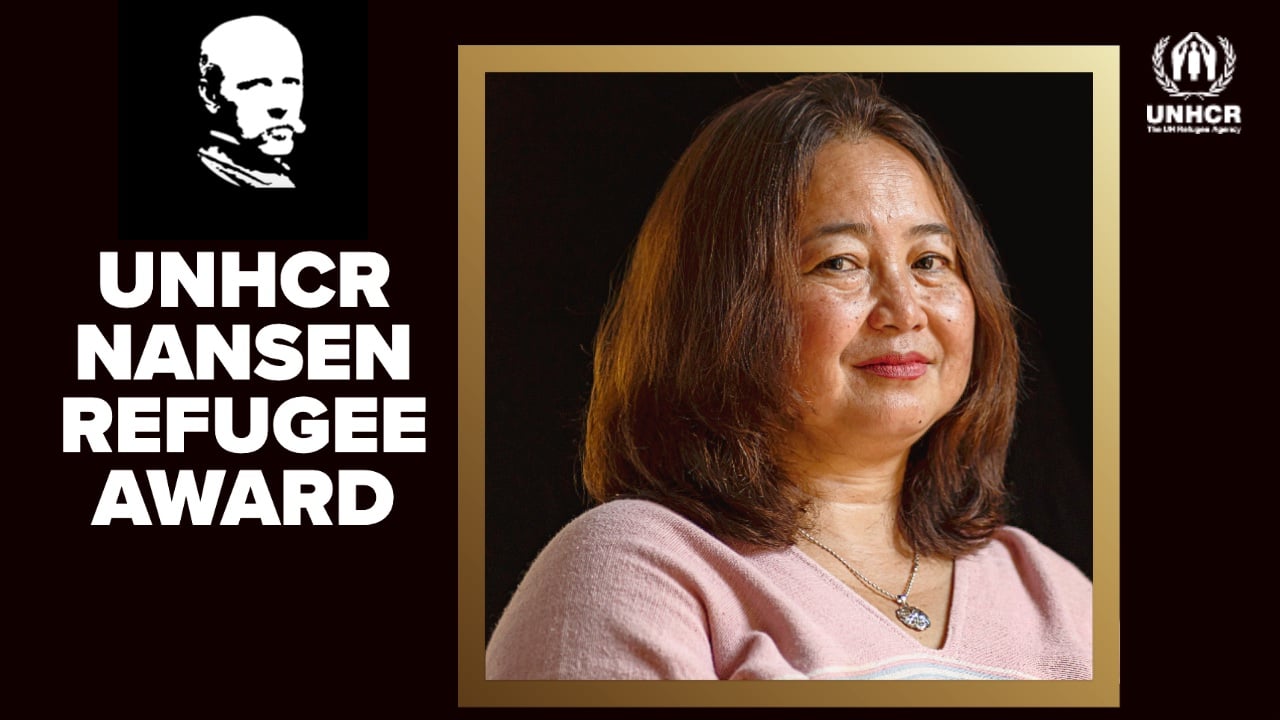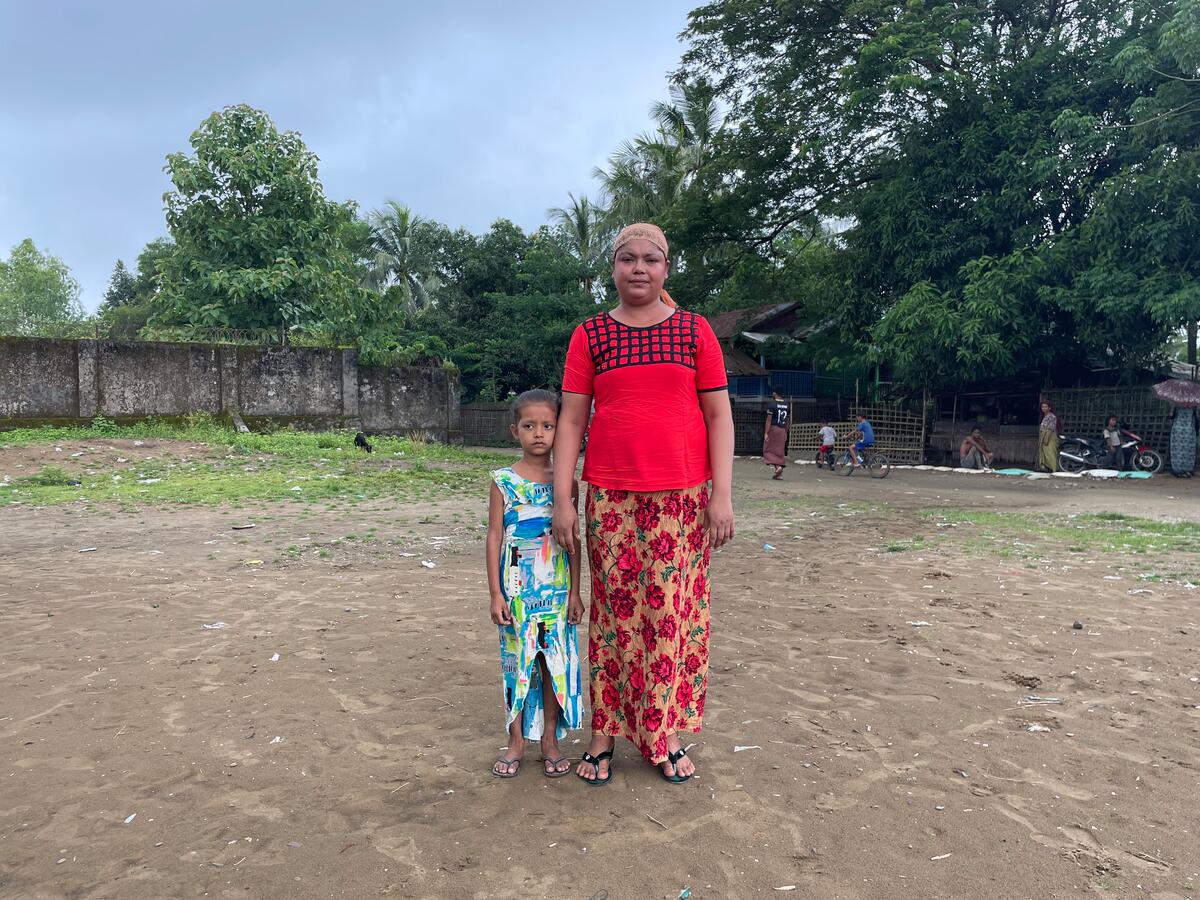Race for roofs as rains start in Myanmar's Rakhine state
Race for roofs as rains start in Myanmar's Rakhine state

SITTWE, Myanmar, June 3 (UNHCR) - When Tropical Storm Mahasen blew through with little fuss on May 16, many people in Rakhine state heaved a collective sigh of relief. Then they took a deep breath and started to pack again.
According to the Myanmar government, some 120,000 people - many of them already uprooted by last year's inter-communal violence - were evacuated from vulnerable areas ahead of the storm.
Most of them have since left their relocation sites. A principal in Sittwe's Thet Kay Pyin area said 4,500 internally displaced people (IDPs) who had crammed into his school left on buses the day after the storm and moved back to their previous locations in the Hmanzi Junction area.
But small pockets of people are unable or unwilling to return to the sites they occupied before the evacuation, citing a lack of services and fear of flooding.
Sukina Khaton, a 70-year-old grandmother, saw her home burn down in Pauktaw township last October. She and her family found refuge in a nearby shrimp-farming area called Nget Chaung, only to leave again in mid-May when they heard about the storm.
"We paid 10,000 kyat (about US$11) each for a boat ride to Sin Tet Maw at night," she said, referring to a waterside village several hours away by boat. "I heard a boat overturned the night before and many people were lost."
In Sin Tet Maw, Sukina now lives underneath a local bamboo house built on stilts, along with several other families of recent arrivals. It's dark, crowded and she has to sit in an awkward position to avoid the water dripping from above. Yet she doesn't want to go back to Nget Chaung.
"Nget Chaung is on the plains. It has no trees or shade. When it rains, it floods. It's very hard to stay there," she said. "We lost everything. I want to stay here for the time-being."
But Sin Tet Maw is already overwhelmed by earlier waves of IDPs. Host families have run low on resources and tents are now scattered around the village. The neighbouring village is unhappy about the new arrivals and tensions are rising.
With limited land available and seasonal rains starting, the authorities are offering a compromise - move back to Nget Chaung where shelters are being built to protect people against the rains.
As part of contingency plans for the monsoon season, the Rakhine state government has agreed to build temporary shelters for 45,000 displaced people in and around the state capital, Sittwe, while UNHCR is building temporary shelters for 25,000 displaced people in Pauktaw and Myebon townships. Made of locally-sourced bamboo and wood, each longhouse-style shelter can house eight families with an average of six people each.
"As the government was unable to provide IDPs with more suitable land for the construction of shelters, UNHCR had no choice but to elevate shelters over the rice fields," said Richard Tracey, UNHCR's shelter expert in Sittwe.
Stilts are driven three feet (almost a metre) into the ground, and stand three feet above ground. These elevated shelters will be linked by elevated walkways with extra cross-bracings to stabilize the structure and avoid collapse. Another fear is that strong winds could tear off the roof made of corrugated iron. To mitigate this risk, builders will bend the ends of the metal roof over its wooden frame to hold it in place.
The season's first rains have fallen but work continues on these shelters. Displaced people in low-lying areas and flimsy shelters are being moved as soon as the work is completed on each site.
The priority is to get people off flooded fields and put a sturdy roof over their heads. But there are also other needs to be considered.
"Shelter alone is not enough," said UNHCR's Tracey. "The IDPs urgently need livelihood opportunities, improved health care and education opportunities in order to get back on their feet."
Nearly a year after the first wave of inter-communal violence broke out, up to 140,000 people are estimated to remain displaced in Rakhine state.
By Vivian Tan in Sittwe and Pauktaw, Myanmar








